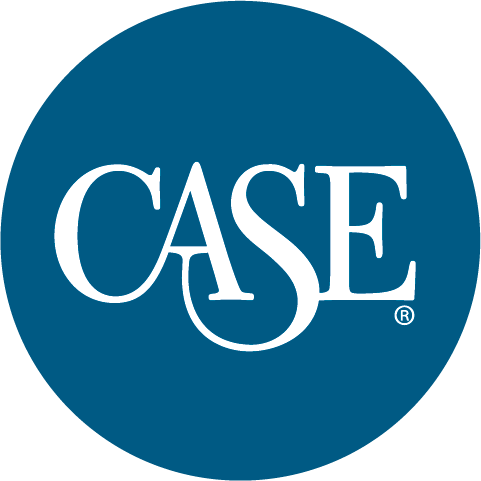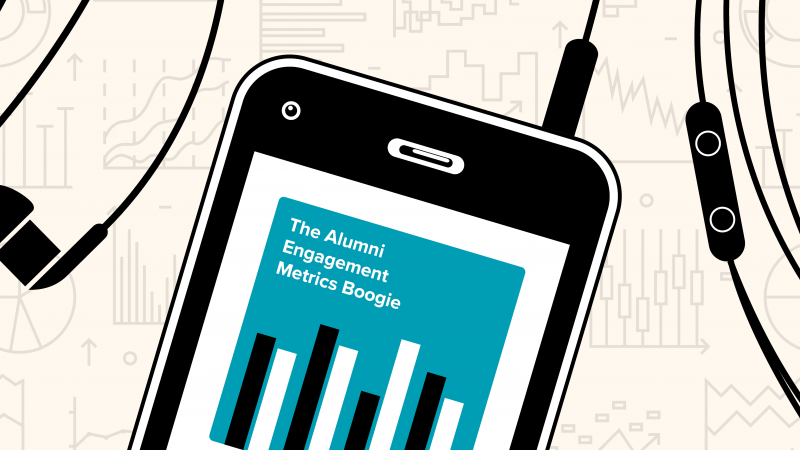
Metrics for Small Shops
Development Metrics for Small Shops
By Carrie Collins and Necie Liggeons
One of the hallmarks of development operations is the abundance of data. We have a metric to track virtually every facet of our business. We utilize dashboards, spreadsheets, databases, and graphs to chart our progress among our staff, to the institution’s leadership, and to its governing body. We are awash with information and statistics. But how can a small shop stay afloat in such a tremendous tide?
Although many publications and presentations address the topic of metrics, little attention has been paid to operations that:
- Have 50,000 alumni or fewer.
- Have 5,000 students or fewer.
- Have 20–25 staff members or fewer.
- Have budgets of less than US$5 million (covering salaries, benefits and operational expenses).
- Close $10 million or less in total commitments on an annual basis
In our book, Development Metrics for Small Shops, we set out to provide guidance to any small development operation within an educational institution that seeks to improve its use of metrics. We looked to a variety of sources, including our decades of experience at several higher education institutions and our participation as speakers at conferences.
Here, we look at why metrics matter for small shops, benchmarking, and which metrics matter most.
Why Metrics Matter
Metrics are crucial for all development shops, but especially small teams, for three reasons:
- measuring return on investment and making the case for more resources,
- supporting staffing decisions, and
- guiding conversations with leaders.
As more institutions place a greater emphasis on fundraising, they also emphasize how much it costs to engage in such activities. Colleges and universities with early-stage development programs must be prepared to spend more than they raise in the first few years. Mature programs will often want to spend more money by adding more staff to raise more money, which research has been confirmed as a viable approach. Recently, with the rise of an assessment culture in higher education and the drive for a positive return on investment, gift officer performance metrics were pushed into the forefront. Fundraising leaders sought tools to inform their decision-making and to help cultivate strategies for planning, budgeting, staffing, and other critical support functions. Many leaders implemented a variety of metrics to calculate a fundraising ROI, including performance metrics for both individual gift officers and the operation as a whole.
But in an economy of ever-shrinking budgets, whether your work supports a private or public institution, we must all continuously strive to do more with fewer resources. When you wish to make a case for increased salary or operational dollars, metrics are critical for persuading leadership to make a decision in your favor. By being able to demonstrate that your frontline fundraisers are closing gifts in amounts much larger than it costs to employ them, you lend credence to the adage that you must spend money to raise money. Further, your ability to thank donors in a cost-effective, timely, and meaningful manner—and to showcase that ability—can also support your case for additional resources. Well-documented metrics buttress your leadership abilities and knack for identifying new talent and cultivating more with less.
Another critical reason to maintain individual performance metrics is to effectuate and support adverse employment decisions. Clear expectations compared with that particular individual’s performance demonstrate that the former employee simply wasn’t raising enough money to cover the cost of their employment. Even in a state that holds dear the notion of at-will employment, this information can support your decision.
Governing boards of educational institutions often have an eclectic mix of experts in business, finance, and other industries. Entrepreneurs are also making more frequent appearances on these boards. Metrics at your fingertips will translate fundraising performance data into a format that many business leaders can readily understand. A report of key metrics that is updated on a consistent basis may open the door to greater and more meaningful conversations about the development work in which you and your team are engaged.

Benchmark with CASE’s AMAtlas
CASE’s AMAtlas Data Miner includes more than 350 variables on charitable giving from approximately 1,000 public and private U.S. higher education institutions. Create comparison groups to benchmark your institution, and download a customized Graphical Program Summary (GPS) Report to explore peer group data.
Comparative Metrics

You may boast of your team’s stellar performance from year to year, but how does your institution compare to strategically selected peer institutions? Ideally your institution has a set of competitor peers, comparator peers, and aspirational peers that were approved by the administrative leadership after a careful review of institutional data. (See box for how to use CASE resources for peer benchmarking.) Just as those peers are examined for data points such as student retention, attrition and admission rates, the development operation can utilize these peers to compare its cash-in and alumni participation rates.
We have found that when comparing similarly sized institutions—with, presumably, similarly sized fundraising shops—this analysis often illustrates how nonlinear fundraising results can be. One institution may be in a multiyear campaign; another may have received a huge bequest in a particular fiscal year. For example, note the drastic changes in the results secured by Institution C in Figure 1.

Fiscal year 2012 was wildly successful at nearly $9 million, while FY13 saw the results decline to nearly half at $4.5 million. Did the team simply stop working after a banner year in 2012? It’s unlikely. Rather, the spike in 2012 can probably be explained through a one-time gift. With this type of information, Institution C’s peers can demonstrate that the $9 million was an anomaly—both for that institution and among the peer group as a whole.
Similarly, in Figure 2, the institutions shown remained relatively steady in their cash-in, with the exception of College C, which saw a spike in FY15. At that school, cash-in returned to closer to its previous level in FY16.
Thus, although showing your institution’s performance in contrast to your comparator peers may demonstrate that you are not as well-positioned as they are, it can also highlight to those who do not immerse themselves in higher education fundraising that the results are rarely so precise.
Which Metrics Matter
To successfully lead a development operation in today’s climate requires that the chief development officer understand the entire constituent base for the institution, create portfolios of donors for management, analyze and understand the abilities of the current staff, and set reasonable performance goals. Although the emphasis when discussing metrics is largely on individual fundraiser performance, there are several measures that can be tracked, recorded, and boasted about to your leadership and governing board, such as performance indicators of success for the institution, individual fundraiser performance, alumni volunteerism, and donor relations. (Giving and philanthropy are essential metrics in CASE’s Global Alumni Engagement Metrics Survey. This research tool measures engagement across four modes: philanthropic, volunteer, experiential, and communications.)

There is a substantial opportunity for creativity and to emphasize the information that best represents the work of your particular institution. For example, we use a method of measuring alumni volunteerism that has not been widely adopted but that is proving quite successful at our current institution. (Explore more deeply in our book, Development Metrics for Small Shops.) CASE has been working since 2018 to develop and measure alumni engagement, captured in the Global Alumni Engagement Metrics Survey. But there is no prohibition on creating your own method by which to measure your alumni population’s service to and engagement with your college or university.
It will likely be difficult to obtain information from peer institutions about some of these metrics, especially those that you have innovated. As long as you can demonstrate progress in an appropriate direction year over year, it is truly heartening to be able to herald your ingenuity and its success for your alumni and donors. Depending on the sophistication and capabilities of your database (and report writers), you may be able to pull key pieces of data directly from the source. If not, a simple way to record this information is shown in Figure 3.
Next steps? Once you define what metrics matter for your shop, you can explore how and what technology can be used to monitor progress, set goals, and analyze and assess the data.

There’s more inspiration to unlock when you become a full CASE member. Meet with a CASE membership specialist to get your first year for $825, that’s up to 55% savings.
About the author(s)
Carrie Collins is the Chief Advancement and Strategic Planning Officer at Philadelphia College of Osteopathic
Medicine, Pennsylvania, U.S.
Necie Liggeons is the Deputy Chief Advancement Officer at Philadelphia College of Osteopathic Medicine, Pennsylvania, U.S.
Tags
Article appears in:

March - April 2022
DIGITAL-ONLY ISSUE
Opportunity Knocking: Inside the Great Resignation and turnover in fundraising, and what keeps great talent on board. Plus: development metrics for small shops, engaging alumni employees, and more.











